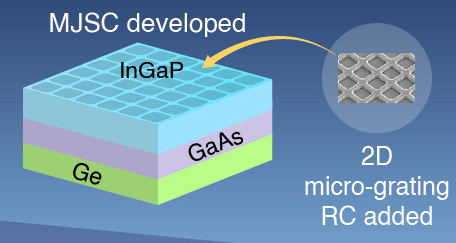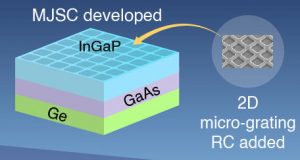
“Standing in the sun all day, solar cells often become very heated,” according to the university. “Over time, this degrades them and lowers their power-conversion efficiency. Integrating radiative coolers can solve this problem without energy consumption.”
The Prusan cells are being cooled radiatively by a microscopic optical grating on the surface of the cell, with the materials and placement of the grating enhancing light absorption and emitting heat, as infra-red radiation, away from the cell.
This is not a new idea, but this “research is the first theoretical and experimental demonstration of the effectiveness of radiative-cooler-integrated solar cells,” said lead engineer Gil Ju Lee (pictured).

Theoretical work indicated that multi-junction solar cells (MJSCs, diagram left) were the best technology on which to try radiative cooling, and the team went on to take InGaP-GaAs-Ge cells through outdoor trials.
Under ~900W/m2 direct sunlight, radiative gratings caused a 6°C temperature drop, 2% increase in open-circuit voltage, and 0.5 mA increase in short circuit current compared with plain glass, said the university.
“Before our study, research has largely focused on single-junction solar cells and computational evaluations,” said Lee. “Our study is the first to experimentally show that multi-junction solar calls benefit the most from radiative cooling.”
This research has been published in Advanced Engineering materials as ‘Determining the effectiveness of radiative cooler-integrated solar cells‘ – payment required for full access.



![W88 [Rủi Ro Khi Chơi Nổ Hũ: Lưu Ý Quan Trọng Nhất Cho Người Chơi]](https://theskil.com/wp-content/themes/rehub-theme/images/default/noimage_336_220.png)

